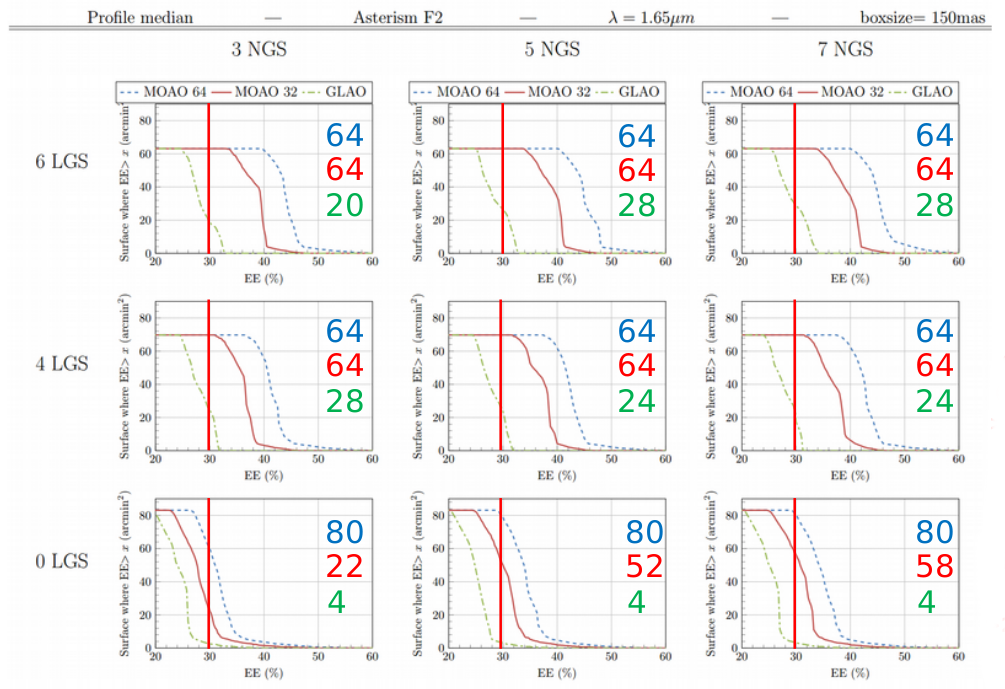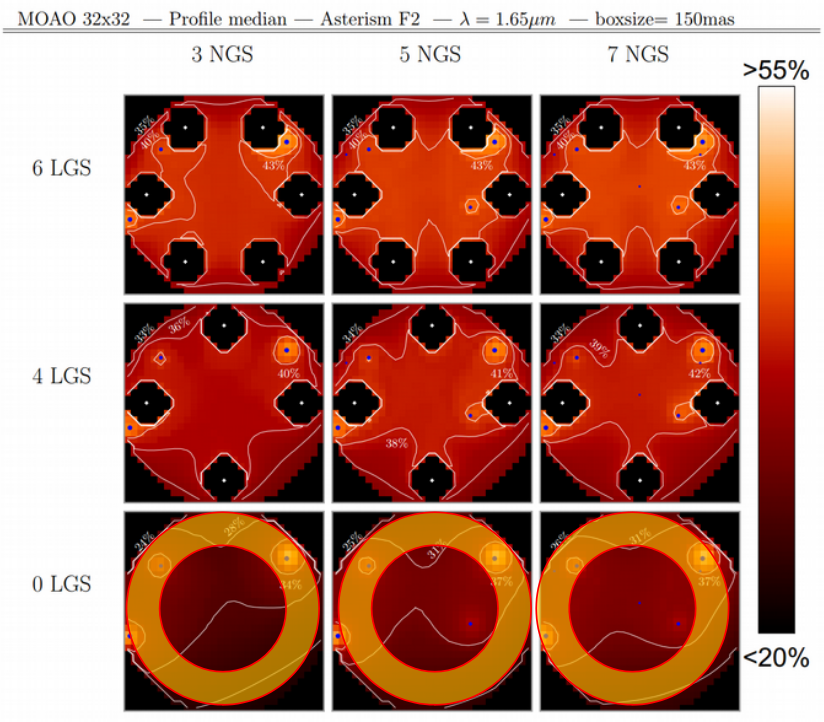|
MOSAIC is the proposed multiple-object spectrograph for the ELT that will utilise the widest possible field of view provided by the telescope. In terms of adaptive optics, there are two distinct operating modes required to meet the top-level science requirements. The MOSAIC High Multiplex Mode (HMM) requires either seeing-limited or GLAO correction within a 0.6 (NIR) and 0.9 (VIS) arcsecond sub-fields over the widest possible field for a few hundred objects. To achieve seeing limited operation whilst maintaining the maximum unvignetted field of view for scientific observation will require recreating some of the functionality present in the Pre-Focal Station relating to control of the ELT active optics. MOSAIC High Definition Mode Control (HDM) requires a 25% Ensquared Energy (EE) within 150mas in the H-band element for approximately 10 targets distributed across the full ELT field, implying the use of Multiple Object AO (MOAO). Initial studies have shown that to meet the EE requirements whilst maintaining high-sky coverage will require the combination of wavefront signals from both high-order NGS and LGS to provide a tomographic estimate for the correction to be applied to the open-loop MOAO DMs. In this paper we present the current MOSAIC AO design and provide the first performance estimates for the baseline instrument design. We then report on the various trade-offs that will be investigated throughout the course of the Phase A study, such as the requirement to mix NGS and LGS signals tomographically. Finally, we discuss how these will impact the AO architecture, the MOSAIC design and ultimately the scientific performance of this wide-field workhorse instrument at the ELT. More information | ||
We have identified several configurations that meet HDM EE requirements under most conditions:
- GLAO only with 4 LGS just meets HDM EE requirements for median conditions (safer with 'better than median' conditions)
- NGS-only MOAO with 32x32 DM just meets requirements for median conditions (safer with 'better than median' conditions and in regions that can be offset from the centre of the field)
- MOAO with 4 LGS and 32 x 32 DM meets requirements under most conditions and the full univgnetted field (with 6 LGS giving 2-3% EE improvement)

Baseline + 2.5%EE with reduced NGS/LGS

Baseline with reduced NGS/LGS : MOAO 32
